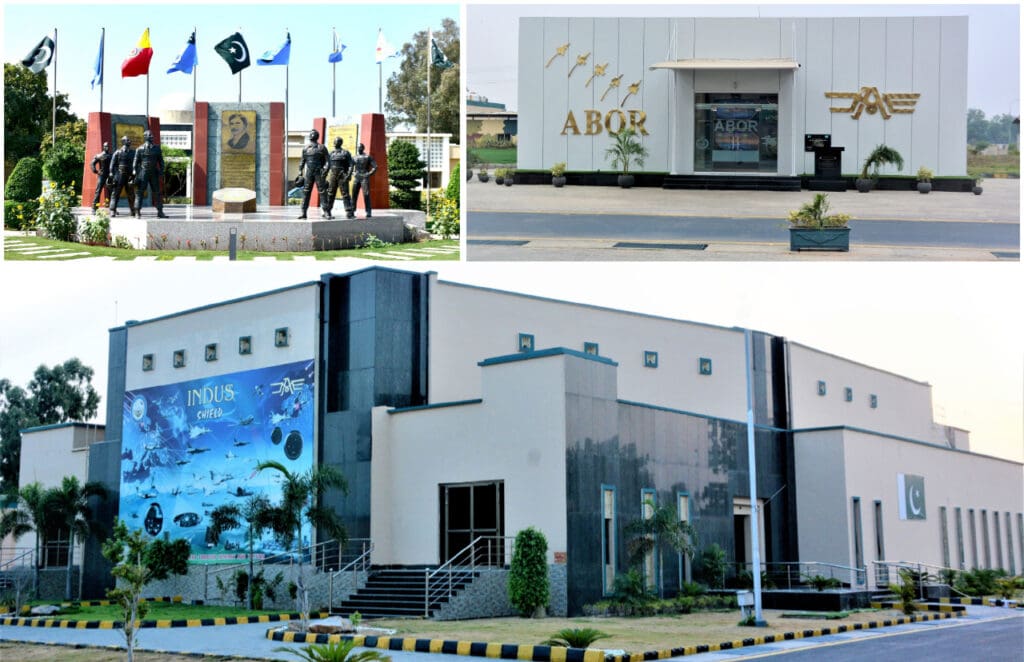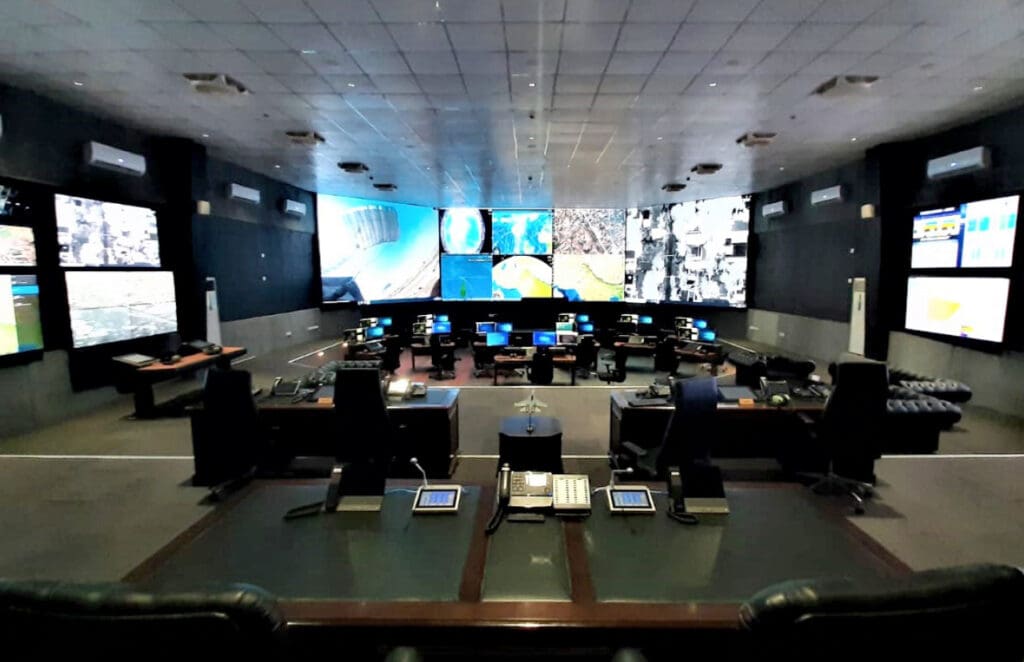Embarking from the Pakistan Air Force’s heritage of excellence, the Air Power Centre of Excellence emerged in 2015, a visionary institution conceived under the guidance of Air Chief Marshal Sohail Aman. ACE epitomizes brilliance and innovation in modern aerospace, reshaping combat training systems and tactics to lead PAF’s evolution in the dynamic world of air warfare, fostering international cooperation and technological advancements.
In the chronicles of history, it is often the case that the humblest of beginnings lay the foundation for the grandest achievements. Such is the story of the Air Power Centre of Excellence (ACE), an institution that has emerged as a beacon of excellence in the field of modern and advanced aerial combat. From its modest origins as the Flight Leadership School at PAF Base Sargodha in 1958, ACE has grown into a global hub for cutting-edge research, training, and innovation in the realm of air warfare.

A Legacy of Professional Mastery
The Pakistan Air Force (PAF) has long been renowned for its commitment to excellence and its rigorous training standards. With a legacy of professional mastery that spans decades, PAF’s reputation in the world of air forces is second to none. It was this legacy that served as the fertile ground for the inception of ACE in 2015.
Under his visionary leadership, Air Chief Marshal Sohail Aman, the former Chief of the Air Staff, set the wheels in motion. He laid the foundations for what would become a formidable institution to address PAF’s training, evaluation, and research requirements in the dynamic and ever-evolving world of air warfare. Under the guidance of Air Chief Marshal Zaheer Ahmed Baber Sidhu, NI(M) ACE expanded its horizons and ventured into groundbreaking initiatives that have garnered international recognition. ACE now stands as a symbol of brilliance and innovation in the field of modern aerospace advancement.
The Role and Tasks of ACE
Since its inception, ACE has never looked back. Its primary role is to revamp and modernize the combat training systems of the PAF. This monumental task ensured exposure to combat crew of all seniority levels, offering them a taste of contemporary multi-domain airpower scenarios at both national and international levels. ACE’s mandate also included the development of tactics and counter-tactics through realistic threat replication, validating the employment concepts of kinetic and non-kinetic capabilities in a joint environment. It has enabled forging critical user linkages with academia and industry, and sharing valuable lessons with allied air forces through the conduct of live and synthetic international exercises. Furthermore, ACE played a crucial role in standardizing publications for PAF Combat Squadrons, ensuring that knowledge was disseminated effectively.
ACE’s Schools Excellence
To achieve its mission, ACE operates distinct sub-facilities, each dedicated to a specific aspect of airpower excellence. In the ever-changing landscape of air warfare, readiness for the unexpected is paramount. The Air Warfare School (AWS) focuses on training combat leadership at junior and mid-level tiers through national and international exercises, specialist training, and interoperability with friendly air forces. International exercises like ACEs Meet and Indus Shield showcased ACE’s global reach and commitment to fostering international cooperation.
Likewise, the Tactics Development School (TDS) played a pivotal role in enhancing standardization among PAF combat and combat support systems. It delved into the fields of employment, equipment induction, and war plans, ensuring that PAF maintains a competitive edge. TDS also housed a treasure trove of knowledge in the form of in-depth studies, reports, and publications on air combat strategies and innovations, which benefit air forces worldwide.

In the realm of airpower excellence, where innovation and evolution were paramount, Air Chief Marshal Zaheer Ahmed Baber Sidhu, NI(M) then Deputy Chief of the Air Staff (Air Defence) conceived an institution as a response to the ever-growing complexity of modern aerial warfare – the Air Battle Management School (ABMS). ABMS responded to the complexity of modern aerial warfare by enhancing operational capability and orchestrating synergy in the employment of kinetic and non-kinetic assets under a centralized command and control architecture. Air Battle Directors, Air Battle Managers and Area Air Defence commanders, from fledgling practitioners to seasoned leaders, converge here to leverage themselves from the intricacies of modern aerial warfare. At ABMS, junior and mid-level air combat crew trained for a spectrum of air operations, fostering interdisciplinary collaboration among sister services.
In a world where the threats constantly evolves, No 48 Electronic Warfare Wing (EWW), played a pivotal role in keeping a vigilant eye on emerging threats. It was more than just a watchtower. It was the hub of electronic warfare activities, ensuring the synergetic employment of electronic warfare assets to enhance national combat potential. EWW maintained and updated threat libraries, especially for Electronic Support assets, for subsequent Mission Data Files (MDFs) Programming for Airborne Self Protection Jammers (ASPJs), collating electronic intelligence (ELINT), communication intelligence (COMINT), and imagery intelligence to keep PAF ahead of potential adversaries.
In line with the Chief of the Air Staff, Air Chief Marshal Zaheer Ahmed Baber Sidhu’s NI(M)vision, ACE was enriched with Electronic Warfare Squadron (EWS). The EWS supported electromagnetic spectrum operations, training exercises, and the validation of employment concepts for future electronic warfare inductions. It integrated PAF’s scattered airborne and terrestrial electronic warfare assets, generating a Recognized Electromagnetic Picture (REMP) for the denial of enemy ISR and Position Navigation and Timing (PNT) services.
State-of-the-Art Training Aids
To ensure efficient and cost-effective training, PAF ACE possesses state-of-the-art training aids and facilities that rival the best in the world. The Joint Strategic Simulation Centre (JSSC), aided in training combat crew and battle staff in a modern and centralized next-generation Synthetic Training Environment (STE). It elevated the inductees’ skills from tactical brilliance to strategic mastery, immersing them in the complexities of Multi-Domain Operations (MDOs) and strategic war gaming. JSSC offered a unique synthetic training solution for all components of airpower in multiple domains, promoting international connectivity and large-scale exercises. The heart of JSSC was a fusion of components, each with a unique purpose, all under one roof. The Computer Generated Forces (CGF) tier was the epicenter of virtual warfare. The Command and Control tier (acting as Joint Air Operations Centre) generated threat assessments and response strategies with mathematical precision. The mini- Flight Tactical Simulators (FTS) and pseudo-pilot stations provided the illusion of a cockpit, while, the Tactical Battle View provided commanders with a real-time glimpse into the simulated environment of the battlefield, transforming data into a visual panorama.

Meanwhile, Red and Blue forces operated in separate planning rooms, plotting strategies that would soon unfold in the virtual theater. The JSSC was a testament to the fusion of human intellect and cutting-edge technology, where the transition from planning to action was seamless, and the outcome was determined not on the battlefield, but within the labyrinthine pathways of data and simulation. In summary, the facility offered unique synthetic training solution to integrate all components of Airpower in multiple domains including offensive, defensive, attack operations, ISR, UAS, EMSO, cyber, and space, quality training for all tiers of ‘Combat Crew and Battle-Staff’, economized Virtual Training Solution’ with round the clock availability and customized and highly flexible training scenarios. It offered effective real-time battle tracking and comprehensive after-action analyses. It also provided emulation of surface forces including SAMs, LRVs, Artillery, Armor, Infantry and Naval Assets (Surface / Sub-surface / CVBG) and connectivity at international and national level for conducting virtual large-scale exercises such as Virtual Flag.
At the heart of AWS was the Air Boss Ops Room (ABOR) – the command center where the intricate choreography of aerial operations came to life. It provided a near-realistic training environment for Multi-Domain Operations (MDOs) and ensured the integration and execution of tactical and operational scenarios.
The facility comprised of an elaborate Command and Control firmware with requisite number of Common Operating Picture (COP) based control stations. For ease of Air Boss operations and smooth conduct of training exercises, ABOR was bifurcated in two sections; based on two- force concept – Offensive and Defensive force. Through ABOR, the Air Boss was now integrated with the overall mission ATO cycle ensuring safety and realistic mission flow while drawing meaningful lesson.
In backdrop of modern battle-space, ACE had also adorned itself with Cyber Operations Room (CybOR). In the modern battle-space, this facility allowed synergetic kinetic and non-kinetic operations. It generated cross-domain effects in operational exercises, training PAF and friendly forces on emerging cyber security threats, besides aiding in the development of a cyber-capable Air Force.
Training Solutions
ACE offers a comprehensive array of training solutions to meet the demands of the hyperactive and dynamic modern air combat environment. These solutions encompassed leadership training, air battle management training, phase build-up training, SAM evasive training, ground-based air defense systems employment training, ISR training, counter-terrorism training, and joint terminal attack controller training.
Beyond the Final Chapter
The story of ACE was one of adaptability, innovation, and unwavering commitment to air power. It had inspired air forces worldwide to seek training and collaboration with the Pakistan Air Force. In the skies above Sargodha, ACE stood tall as the forge where the future of air power was being shaped. It’s a future that embraced the unknown, adapted to the unpredictable, and never stopped striving for excellence.
One of the most iconic chapters in ACE’s history was its crucial role in “Operation Swift Retort,” a testament to PAF’s unwavering commitment and readiness to respond to emerging threats with precision and valor. ACE orchestrated a technology-intensive exercise that showcased a comprehensive and synergetic training environment, addressing multiple domains and offering innovative solutions. With ACE’s continued dedication to excellence, the Pakistan Air Force remains at the forefront of modern aerospace advancement.









